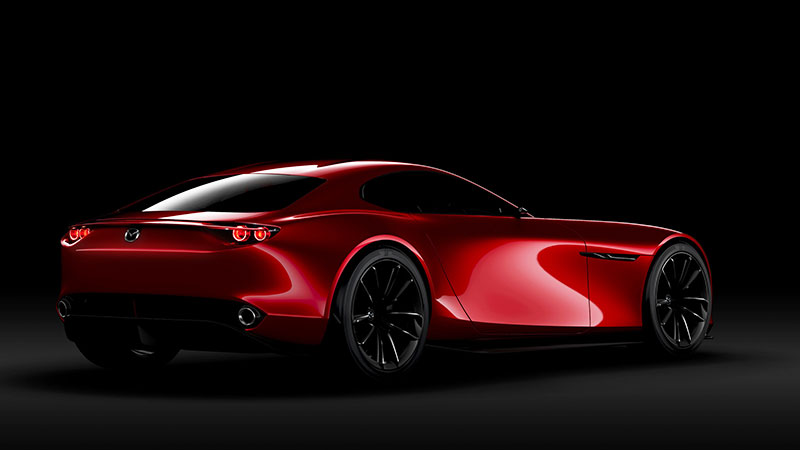At this year’s 2015 Tokyo Motor Show, which runs through Nov. 8, Mazda took the wraps off the stunning RX-Vision Concept. It’s a sleek-bodied coupe that hints at the potential design of an RX-9—if it actually goes into production. Details are scarce, but its lineage from the FD-generation RX-7 is undeniable. The Mazda press release read: “While mass production is currently on hold, Mazda has never stopped research and development efforts towards the rotary engine.”
Mazda explained that the RX-Vision—and presumably whatever production model it yields—has the engine mounted in the front, power going to the rear wheels and (what appears to be) a manual gearbox in the center. That’s just the way we like it. The company is keeping specifics about its future rotary-powered plans a closely guarded secret, but it’s easy to assume that its has every intention of bringing back the rotary motor.
Mazda is the only company to have successfully mass-produced a rotary motor, also known as the Wankel engine. The engine’s design is different than traditional gasoline-fueled internal combustion engines. Instead of pistons in cylinder heads, the Wankel design converts pressure into rotating motion in a triangle-shaped engine block. Not only is it simpler than a traditional gas engine, it’s also more compact—and therefore lighter in most applications.
While the rotary engine was typically used in Mazda’s performance models, starting with the legendary RX-3, its heyday was in the 1990s when it powered the gorgeous third-generation RX-7. Tuners flocked to the car and the aftermarket began offering a myriad of go-fast parts, resulting in cars like this striking example from 1993—a car so desirable that its resell value defies gravity, even two decades later.

Powered by the quad-rotor R26B rotary engine, the 787B made a whopping 789 horsepower and had a top speed of 217 miles per hour. The year after the 787B won Le Mans, new rules made a 3.5-liter V10 the only type of engine admissible for the race, effectively banning the rotary engine.
But perhaps the rotary engine’s finest hour was when Mazda’s team took the overall victory at the 1991 24 Hours of Le Mans in 1991 with the rotary-powered 787B—the first and only Wankel-powered entry to claim victory there.
However, due to difficulties meeting increases in government fuel economy standards, Mazda stopped mass-producing rotary engines a few years ago—despite insisting that it was going to keep the Wankel engine alive. Not much had been heard about Mazda’s rotary future since production stopped—that is, until now.







